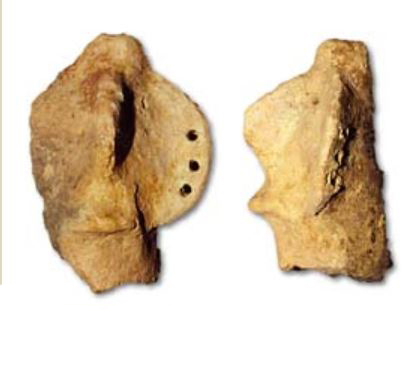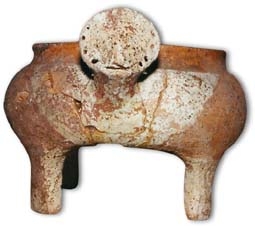- Home
- Hârsova, the chalcolithic village
- Imagination and creativity
- Cult activities
The Gumelnita buildings which were discovered to be completely particular in their interior arrangement, as well as containing very specific furniture, are interpreted by archaeologists as temples where collective ceremonies had been held.
At the same time, statuettes or domestic altars discovered within dwellings make it possible to suppose the existence of domestic rites within a family setting.
There are a certain number of clay or bone objects, like anthropomorphic vases or statuettes which seem to constitute a collection of figurines, mostly feminine, portrayed at various stages of life : young, old, pregnant, or in specific poses such as seated, or carrying a vase on its head. These are regarded as kinds of idols which were called upon during particular rites and rituals. In this range of representations, humanity and its place in the natural world, are illustrated in synthetic and idealized forms which define the spirituality of the Gumelnita populations.
The Hârsova tell has not currently manifest many examples of the Gumelnita statuary so abundantly represented at other archaeological sites.
Head fragment of an anthropomorphic statuette, which probably adorned the altar of Gumelnita household #11 at Hârsova.
Painted anthropomorphic vase support, probably used in domestic rituals.
Small portable ceramic altar. The higher part constitutes a small cup and carries traces of burns suggesting that it was probably used as a censer for fragrances. (origin : Hârsova)


